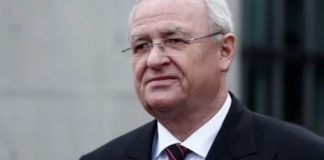BY
On a bright Tuesday afternoon I was leaving work when a well-known unmarked state police vehicle drove around me without emergency lights at approximately 20 miles over the speed limit. I was eager to learn what the emergency (trying not to speed myself) was, so, I followed from a safe distance. Eventually the state trooper arrives at the local police department. I questioned the cop and called him out about his double standards regarding the law.
The trooper, who was not in uniform, immediately threatened me with retaliatory citations. The unidentified trooper was asking if I had a “certified speedometer” in my truck. Not intimidated, I insist the trooper is in the wrong. The trooper claimed that it was illegal to follow him. When I corrected him, stating I can follow public servants, the trooper said “not at the speed [limit] I was going.” This is a clear admission of guilt. I follow the trooper into the lobby where there was another officer waiting. I ask the officer to write the trooper a ticket to no avail. After I turned on my Cell 411 livestream, I returned to the lobby to try and get a name and badge number.
The person to respond was none other than the Lehighton Police Chief Brian Biechy. The Chief was less than helpful and is the same Chief involved in a controversy earlier this year when a ‘right to know request’ revealed the he had not filed a complaint made to him about a subordinate. Therefore, it’s not surprising that he didn’t identify the unknown trooper.
I thought it was a constructive use of my time to let the officer know that there are citizens out there who care and will not let them get away with breaking the law. It seems that a close knit club of lawless good ‘ol boys are running the show. It is evident to me that even though I have not met this officer before, that he already knows who I am and what I do.
You may contact the Chief and the trooper’s respective commander in the information provided below. Let them know that shiny badges do not grant extra rights!
Lehighton Borough Police Department
Address: 1 Constitution Ave, Lehighton, PA 18235
Phone:(610) 377-4002
Pennsylvania State Police Troop N Lehighton Pennsylvania: 9170 Interchange Rd, Lehighton, PA 18235
Phone:(610) 377-4270










Chicago speed camera’s caught hundreds of public employees including , police, bus drivers and others. A very typical public employee attitude in Chicago.
http://www.chicagotribune.com/news/watchdog/redlight/ct-met-chicago-speed-cameras-government-met-20151228-story.html
Coinage Act of 1873
The decision of the German Empire to cease minting silver thaler coins in 1871 caused a drop in demand and downward pressure on the value of silver; this had a knock-on effect in the USA, where much of the supply was then mined. As a result, the Coinage Act of 1873 was introduced and this changed the United States silver policy.
Before the Act, the United States had backed its currency with both gold and silver, and it minted both types of coins. The Act moved the United States to a ‘de facto’ gold standard, which meant it would no longer buy silver at a statutory price or convert silver from the public into silver coins (though it would still mint silver dollars for export in the form of trade dollars).
The Act had the immediate effect of depressing silver prices. This hurt Western mining interests, who labeled the Act “The Crime of ’73.” Its effect was offset somewhat by the introduction of a silver trade dollar for use in Asia, and by the discovery of new silver deposits at Virginia City, Nevada, resulting in new investment in mining activity. But the coinage law also reduced the domestic money supply, which raised interest rates, thereby hurting farmers and anyone else who normally carried heavy debt loads. The resulting outcry raised serious questions about how long the new policy would last.[8] This perception of instability in United States monetary policy caused investors to shy away from long-term obligations, particularly long-term bonds. The problem was compounded by the railroad boom, which was in its later stages at the time.
In September 1873, the US economy entered a crisis. This followed a period of post-Civil War economic over-expansion that arose from the Northern railroad boom. It came at the end of a series of economic setbacks: the Black Friday panic of 1869, the Chicago fire of 1871, the outbreak of equine influenza in 1872, and demonetization of silver in 1873.
Jay Cooke & Company fails
In September 1873, Jay Cooke & Company, a major component of the United States banking establishment, found itself unable to market several million dollars in Northern Pacific Railway bonds. Cooke’s firm, like many others, had invested heavily in the railroads. At a time when investment banks were anxious for more capital for their enterprises, President Ulysses S. Grant’s monetary policy of contracting the money supply (again, also thereby raising interest rates) made matters worse for those in debt. While businesses were expanding, the money they needed to finance that growth was becoming scarcer.
Cooke and other entrepreneurs had planned to build the second transcontinental railroad, called the Northern Pacific Railway. Cooke’s firm provided the financing, and ground was broken near Duluth, Minnesota, for the line on 15 February 1870. But just as Cooke was about to swing a $300 million government loan in September 1873, reports circulated that his firm’s credit had become nearly worthless. On 18 September, the firm declared bankruptcy.
Effects on the U.S.
New York police violently attacking unemployed workers in Tompkins Square Park, 1874.
The failure of the Jay Cooke bank, followed quickly by that of Henry Clews, set off a chain reaction of bank failures and temporarily closed the New York stock market. Factories began to lay off workers as the United States slipped into depression. The effects of the panic were quickly felt in New York, and more slowly in Chicago, Virginia City, Nevada, and San Francisco.
The New York Stock Exchange closed for ten days starting 20 September. By November 1873 some 55 of the nation’s railroads had failed, and another 60 went bankrupt by the first anniversary of the crisis. Construction of new rail lines, formerly one of the backbones of the economy, plummeted from 7500 miles of track in 1872 to just 1600 miles in 1875. 18,000 businesses failed between 1873 and 1875. Unemployment peaked in 1878 at 8.25%. Building construction was halted, wages were cut, real estate values fell and corporate profits vanished.
Robert Anton Wilson and Karl Hess: Subversion for Fun and Profit
https://www.youtube.com/watch?v=kEdRde6jew0